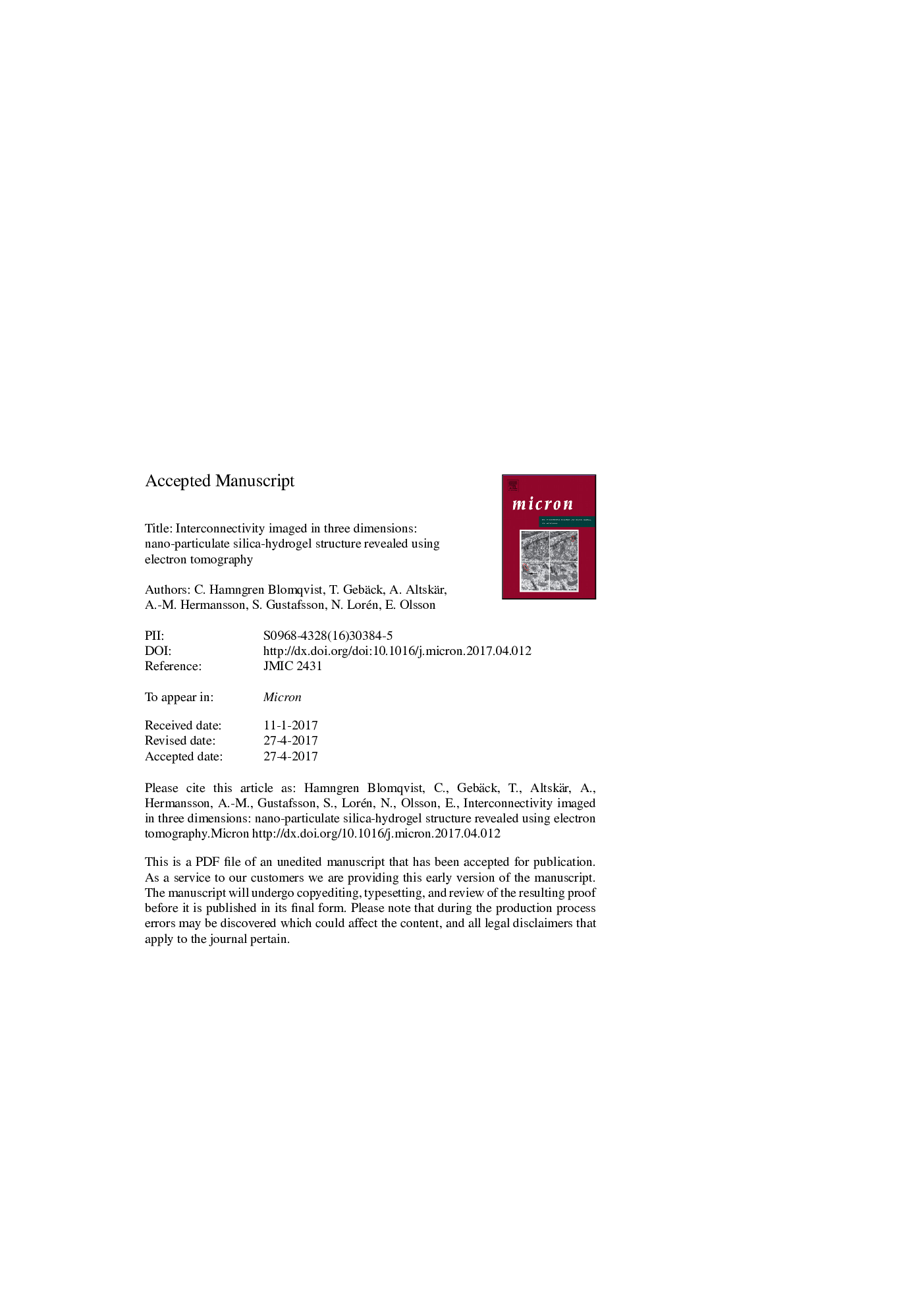| کد مقاله | کد نشریه | سال انتشار | مقاله انگلیسی | نسخه تمام متن |
|---|---|---|---|---|
| 5456932 | 1515116 | 2017 | 19 صفحه PDF | دانلود رایگان |
عنوان انگلیسی مقاله ISI
Interconnectivity imaged in three dimensions: Nano-particulate silica-hydrogel structure revealed using electron tomography
ترجمه فارسی عنوان
همبستگی در سه بعد نشان داده شده است: ساختار سیلیکا-هیدروژل نانو ذرات با استفاده از توموگرافی الکترونی نشان داده شده است
دانلود مقاله + سفارش ترجمه
دانلود مقاله ISI انگلیسی
رایگان برای ایرانیان
کلمات کلیدی
توموگرافی الکترونی، ژل نانوذرات سیلیکا، ژل سیلیس کلوئیدی، مواد نرم متخلخل، کسر حجم قابل دسترس، همبستگی،
موضوعات مرتبط
مهندسی و علوم پایه
مهندسی مواد
دانش مواد (عمومی)
چکیده انگلیسی
We have used Electron Tomography (ET) to reveal the detailed three-dimensional structure of particulate hydrogels, a material category common in e.g. controlled release, food science, battery and biomedical applications. A full understanding of the transport properties of these gels requires knowledge about the pore structure and in particular the interconnectivity in three dimensions, since the transport takes the path of lowest resistance. The image series for ET were recorded using High-Angle Annular Dark Field Scanning Transmission Electron Microscopy (HAADF-STEM). We have studied three different particulate silica hydrogels based on primary particles with sizes ranging from 3.6Â nm to 22Â nm and with pore-size averages from 18Â nm to 310Â nm. Here, we highlight the nanostructure of the particle network and the interpenetrating pore network in two and three dimensions. The interconnectivity and distribution of width of the porous channels were obtained from the three-dimensional tomography studies while they cannot unambiguously be obtained from the two-dimensional data. Using ET, we compared the interconnectivity and accessible pore volume fraction as a function of pore size, based on direct images on the nanoscale of three different hydrogels. From this comparison, it was clear that the finest of the gels differentiated from the other two. Despite the almost identical flow properties of the two finer gels, they showed large differences concerning the accessible pore volume fraction for probes corresponding to their (two-dimensional) mean pore size. Using 2D pore size data, the finest gel provided an accessible pore volume fraction of over 90%, but for the other two gels the equivalent was only 10-20%. However, all the gels provided an accessible pore volume fraction of 30-40% when taking the third dimension into account.
ناشر
Database: Elsevier - ScienceDirect (ساینس دایرکت)
Journal: Micron - Volume 100, September 2017, Pages 91-105
Journal: Micron - Volume 100, September 2017, Pages 91-105
نویسندگان
C. Hamngren Blomqvist, T. Gebäck, A. Altskär, A.-M. Hermansson, S. Gustafsson, N. Lorén, E. Olsson,
